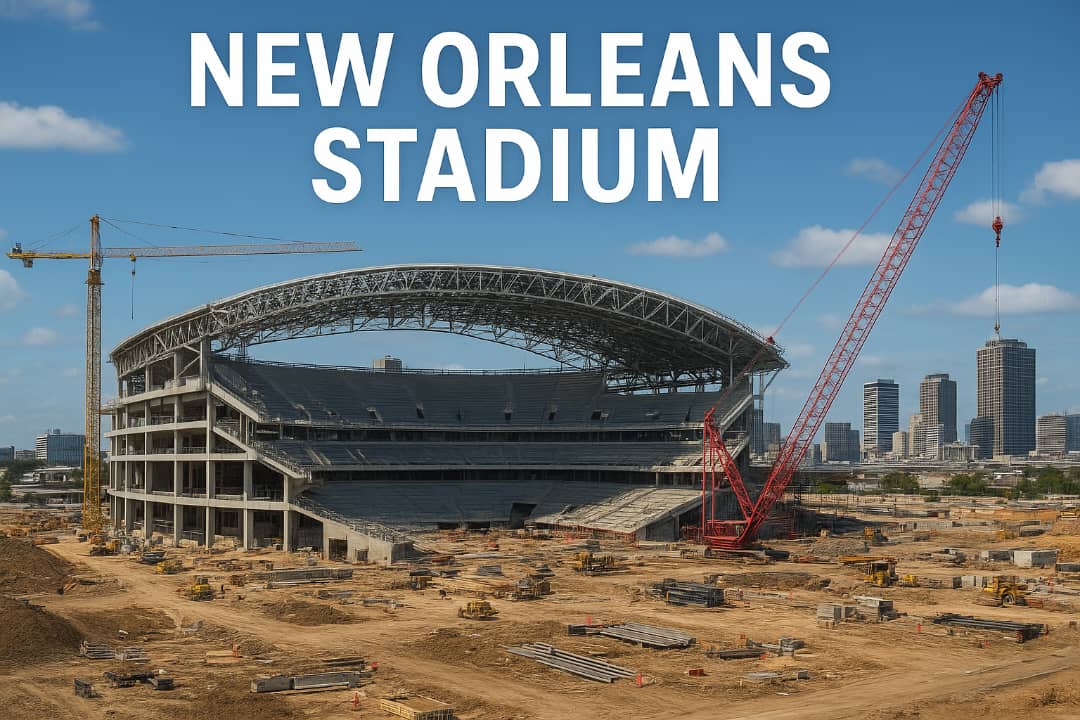New Orleans’ Visionary Stadium Project Nears Completion as CEO Vows to Finish Before Retirement.
The skyline of New Orleans is changing once again—this time, not because of a new skyscraper or urban development, but because of a monumental sports and entertainment complex set to redefine the city’s legacy.
The construction of the New Orleans Stadium, a state-of-the-art facility designed to be one of the most technologically advanced venues in America, is now entering its final stages.
The ambitious project, which has already attracted national attention, is the brainchild of the company’s visionary CEO, who has promised to see it through before his much-anticipated retirement.
The massive structure, visible from miles away, is more than just a sports arena—it represents a commitment to the future of New Orleans, both economically and culturally. Built on a 70-acre site in the heart of the city, the New Orleans Stadium is poised to serve as the new home for major sporting events, concerts, and community gatherings. The CEO, a lifelong advocate for innovation and local growth, describes the project as his “final gift” to the city that shaped his career and legacy.
“This isn’t just concrete and steel,” he said during a recent press tour of the site. “It’s a symbol of resilience, pride, and unity. New Orleans has always been a city of spirit—and this stadium will stand as proof of that spirit for generations to come.”
The project, estimated at over $2.4 billion, is backed by a combination of private investment and city partnerships. It’s expected to generate thousands of construction jobs and permanent positions once operational, while also stimulating tourism and commerce across the region.
Local vendors and small businesses are already lining up to secure contracts for operations, food, and event management, with city leaders praising the inclusive economic model that prioritizes local involvement.
Architecturally, the stadium is a masterpiece in progress. The design features a retractable roof, energy-efficient systems, and a seating capacity of nearly 75,000. It will include luxury suites, digital fan zones, and one of the largest high-definition screens in professional sports.
The surrounding plaza will feature green spaces, restaurants, retail stores, and an interactive museum celebrating New Orleans’ sports and cultural history.
Despite challenges such as material delays and weather disruptions, construction has remained impressively on schedule. Engineers report that more than 80 percent of the structural framework is complete, and finishing touches on the roof are expected to begin early next year. The CEO has personally overseen several site visits each month, ensuring the project meets both budgetary and design standards.
His leadership has not gone unnoticed. Colleagues describe him as a perfectionist with a passion for legacy building. “He’s the kind of leader who doesn’t just talk about vision—he builds it,” said the project manager. “We all know how important this stadium is to him, and to New Orleans. Everyone here feels we’re part of something historic.”
When completed, the New Orleans Stadium will not only serve as a new home for major league teams but also as a hub for local events—from high school championships to cultural festivals. Its construction marks a turning point for a city that continues to rise stronger with each decade.
As the CEO prepares for the final chapter of his professional journey, he remains clear about his mission. “I want to leave behind something tangible—something that outlives me and reminds people that progress is possible even in the face of adversity.”
With the finishing line in sight, New Orleans stands ready to welcome its new crown jewel—a beacon of pride, progress, and perseverance for the generations to come.







